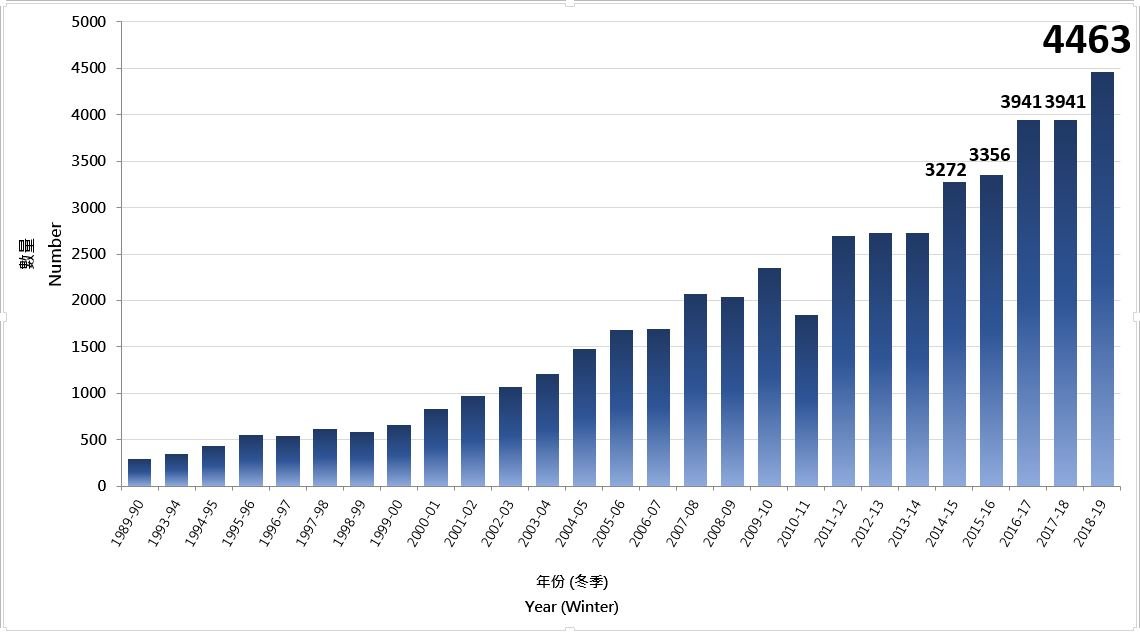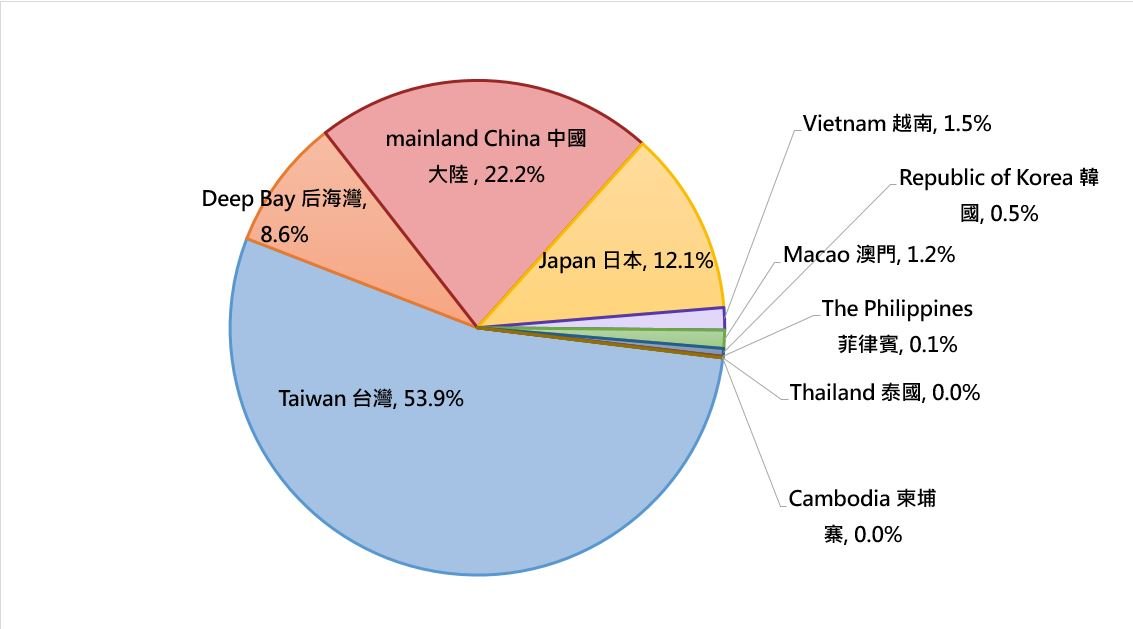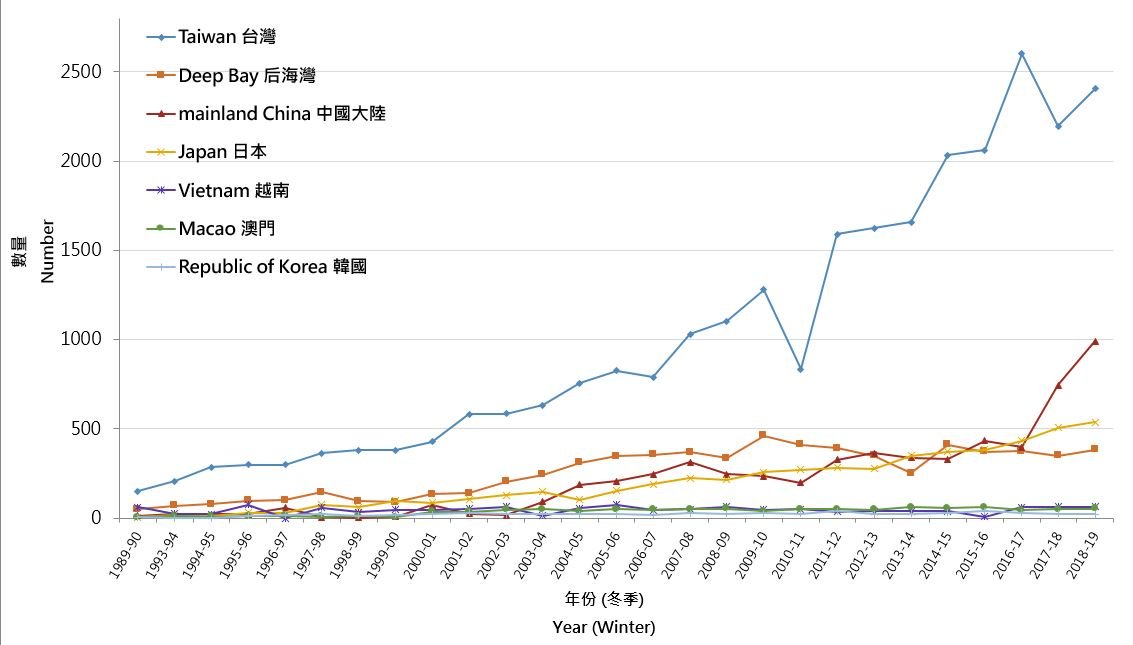The Hong Kong Bird Watching Society (HKBWS) coordinated The International Black-faced Spoonbill Census 2019 that was undertaken from 25 to 27 of January. During the 2019 census, a total of 4,463 Black-faced Spoonbills was recorded, a 13% increase compared to that of the last year.
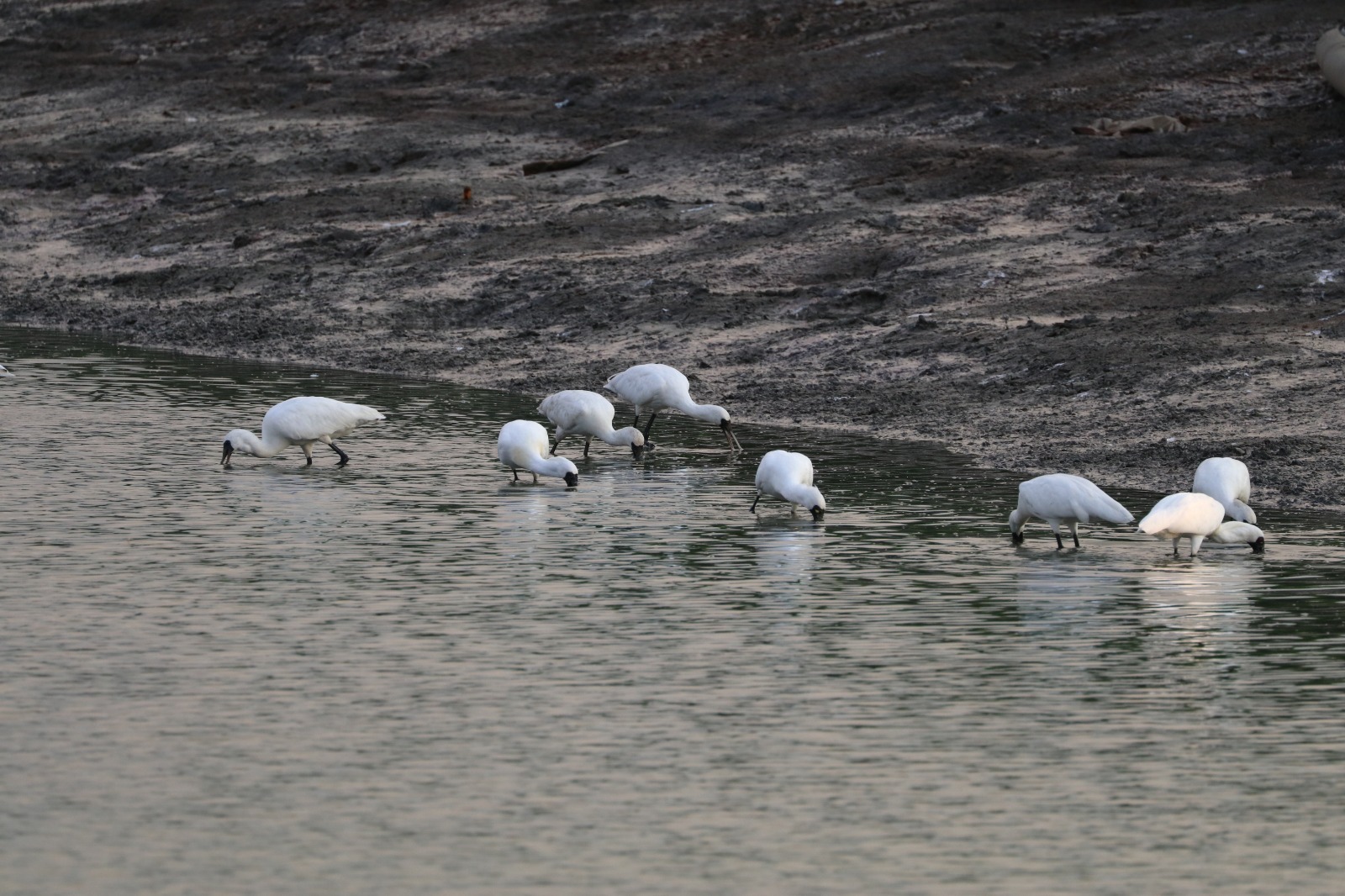
Steady rise in population: Black-faced Spoonbill is expected to be listed as “vulnerable”
The International Black-faced Spoonbill Census was has been carried out since 1994, nearly 200 senior birdwatchers, conservationists, researchers, and ornithologists participated at the same time at more than 100 sites all over the world. Census results from the past 25 years show that the population of Black-faced Spoonbill (BFS) is rising steadily. Mr Yu Yat-tung, the Research Manager of HKBWS anticipated that “the Black-faced Spoonbill may be downlisted from “Endangered” to “Vulnerable” in the near future. This is an extremely rare but very encouraging event in bird conservation. However, the Black-faced Spoonbill is still considered to be at high risk of unnatural extinction and ongoing conservation, research and monitoring are still needed.”
25-years of conservation work for Black-faced Spoonbill sees hope rising steadily
Comparing data from the past 5 years, there is a steady growth in population of BFS, not only in a few places but in most of the main wintering sites of BFS in Japan, Taiwan, Deep Bay (Hong Kong) and mainland China.
BFS conservation began in the early 90s, and has come a long way, including research, tracking, advocating, lobbying and public education as well as collaboration across difference countries and regions. The BFS’s population has now increased from fewer than 300 individuals to nearly 4,500 this year. We believe that this is a big step forward for bird conservation and is also a step away from extinction for the BFS. It is wonderful to see greatly increased public awareness of BFS in most countries across its range and the name of BFS go viral: this is a source of great encouragement for everyone involved in its conservation.
HKBWS urges protection of fishpond to meet its’ population increase
It is hoped that the population of BFS will continue to grow steadily, hence there are two main directions for future conservation. First is the need to increase the capacity of current wintering sites. Census results from Jiangmen and Leizhou Peninsula are good examples of what is needed: these are newly established wintering sites of BFS: in Jiangmen numbers increased from 23 to 61 from 2015 – 2019; whilst in the Leizhou Peninsula numbers grew from 4 to 14 from 2014-19.
The second main conservation direction is to increase the carrying capacity of the current wintering sites; this is the focus of conservation in Hong Kong and Deep Bay. Census data there shows that more than 30% of BFS were recorded in fishpond areas, indicating that fishponds are an important habitat for BFS. In addition to the Hong Kong Fishpond Conservation Scheme which has been in operation since 2012, HKBWS suggests that a proactive conservation policy is needed, both to maintain fish farming operations and the integrity of fishpond habitat in order to raise the carrying capacity of BFS in Hong Kong and Deep Bay. For instance, the government can prudently scrutinize the potential conservation implications of every relevant development submission. Further, as Mr Yu added, “Every one of us can help BFS conservation by consuming delicious locally-raised fishes!
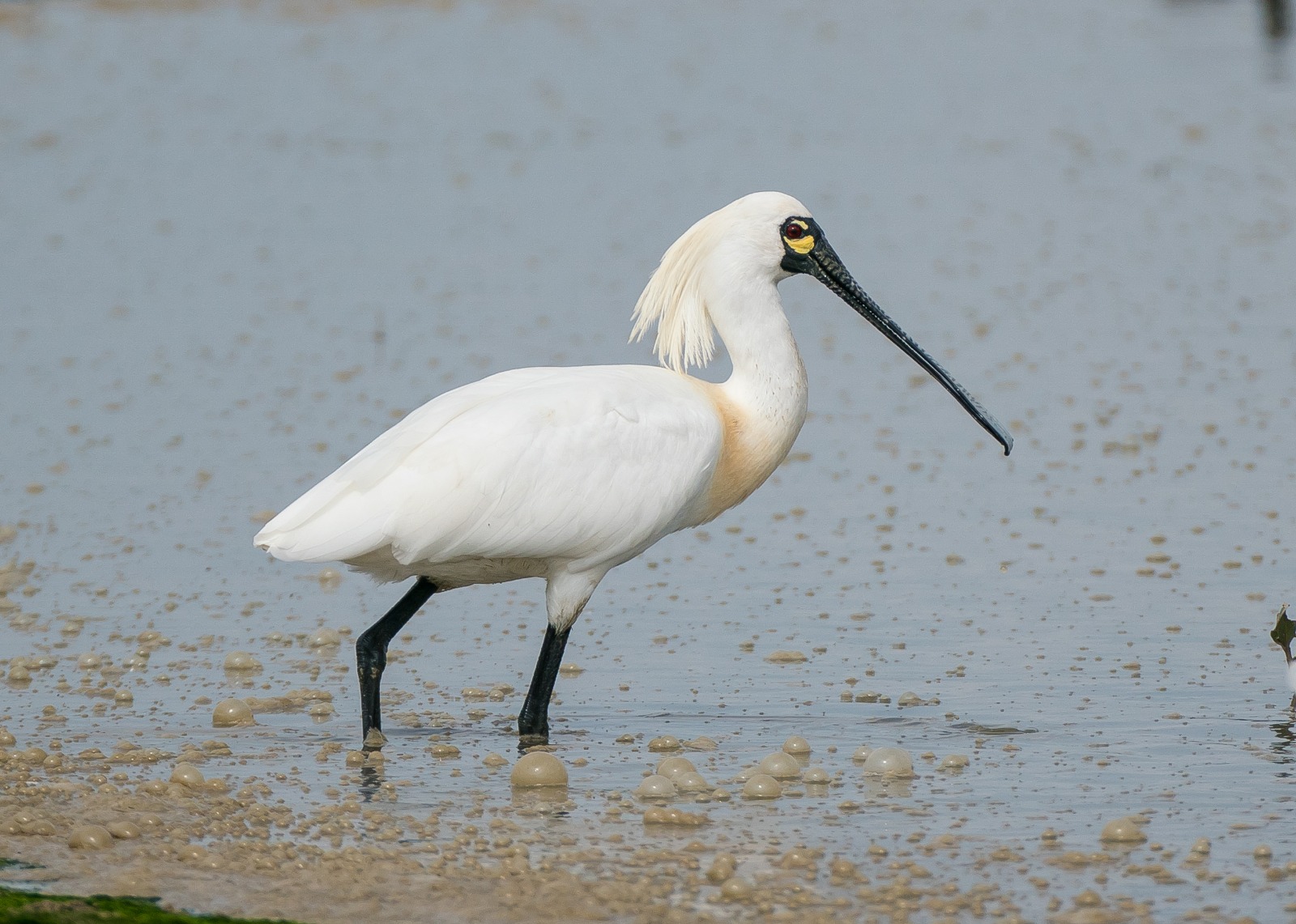 Photo credit: Kenneth Lam
Photo credit: Kenneth Lam
******
附加資料
一:2019年各地普查結果
Figure 1: Results of different locations in 2019 Census
|
地區 Place |
2017 數量 (佔總數百份比 % to total) |
2018 數量 (佔總數百份比 % to total) |
2019 數量 (佔總數百份比 % to total) |
趨勢Trend (比較 against 2018) |
|
台灣 Taiwan |
2,601 (66.0%) |
2,195 (55.7%) |
2,407 (53.9%) |
+212隻 (+9.7%) |
|
香港和深圳 (后海灣) Hong Kong & Shenzhen (Deep Bay) |
375 (9.5%) |
350 (8.9%) |
383 (8.6%) |
+33隻 (+9.4%) |
|
中國大陸 Mainland China |
397 (10.1%) |
744 (18.9%) |
990 (22.2%) |
+246隻 (+33.1%) |
|
日本 Japan |
433 (11.0%) |
508 (12.9%) |
538 (12.1%) |
+30隻 (+5.9%) |
|
越南 Vietnam |
62 (1.6%) |
65 (1.6%) |
65 (1.5%) |
沒有改變 |
|
澳門 Macau |
44 (1.1%) |
50 (1.3%) |
53 (1.2%) |
+3隻 (+6.0%) |
|
韓國 South Korea |
29 (0.7%) |
26 (0.7%) |
23 (0.5%) |
-3隻 (-11.5%) |
|
菲律賓 The Philippines |
0 (0.0%) |
3 (0.1%) |
3 (0.1%) |
沒有改變 |
|
泰國 Thailand |
0 (0.0%) |
0 (0.0%) |
1 (0.02%) |
多1隻 |
|
柬埔寨 Cambodia |
0 (0.0%) |
0 (0.0%) |
0 (0.0%) |
沒有改變 |
|
總數 Total |
3,941 |
3,941 |
4,463 |
+522隻 (+13.2%) |
二:1989-90至2018-19年冬季的全球黑臉琵鷺數量
Figure 2 : Numbers of wintering Black-faced Spoonbill in the world from 1989-90 to 2018-19
三:2019全球同步普查期間黑臉琵鷺在不同越冬地的全球百分比
Figure 3: Proportion of wintering Black-faced Spoonbill at different locations to the global total in 2019 International Census
四:比較七個主要越冬地區的已知黑臉琵鷺數量趨勢
Figure 4: A comparison of the trends of the known global population of Black-faced Spoonbill at main wintering areas
五:2019全球同步普查期間黑臉琵鷺分佈地圖
Figure 5: Distribution map of Black-faced Spoonbill during International Census 2019
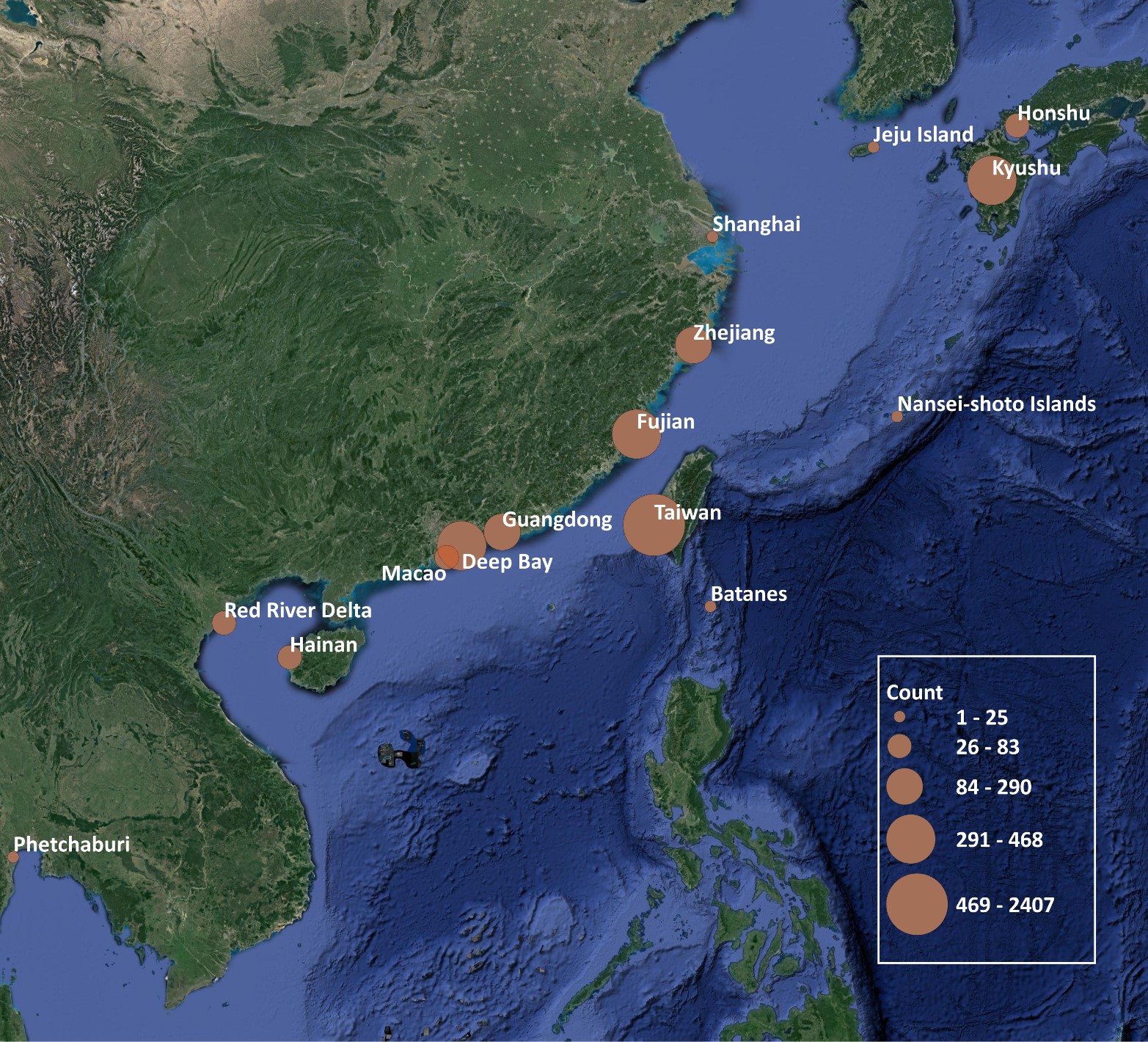
Details could be found in report below:


